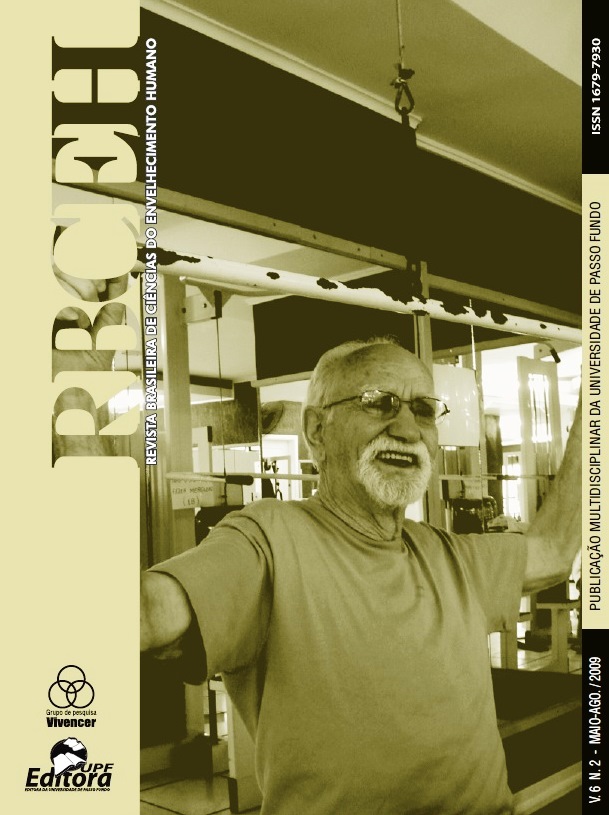Aplicação da Escala de Equilíbrio de Berg para verificação do equilíbrio de idosos em diferentes fases do envelhecimento
DOI:
https://doi.org/10.5335/rbceh.v6i2.194Palavras-chave:
Idoso. Equilíbrio musculoesquelético. Escala de equilíbrio de Berg. Risco de queda. Maleabilidade.Resumo
RESUMO Atualmente, sabe-se que um dos principais fatores que limitam a vida do idoso é o desequilíbrio. Estima-se que a prevalência de queixas de desequilíbrio nos idosos acima de 65 anos chegue a 85%.7Ainda não há um consenso na literatura sobre qual a idade ou faixa etária em que os idosos começam a perder seu equilíbrio.12 Este estudo tem o intuito de através da aplicação de uma escala de equilíbrio funcional, Berg balance scale, observar em idosos independentes e sem patologias que interfiram em seu equilíbrio, qual a faixa etária e a tarefa da Berg, que há maior desequilíbrio. A amostra foi composta por 55 idosos; dividiu-se em dois grupos, o primeiro composto por 30 idosos com faixa etária 65-79 anos e o segundo com 25 idosos com faixa etária entre 80-94 anos. Para a análise dos dados a Berg foi dividida em 5 agrupamentos(transferências, provas estacionárias, alcance funcional, componentes rotacionais e base de sustentação diminuída).19,26 Nesta amostra, a faixa etária acima de 80 anos foi a que apresentou maior desequilíbrio sendo a sua pontuação total da Berg indicativa de limite para risco de quedas. Em relação aos agrupamentos e tarefas da Berg que mostraram maior desequilíbrio respectivamente foram: a base de sustentação diminuída e a tarefa 14. Acredita-se que a prevenção seja importante nesta faixa etária; sugere-se mais estudos para verificar se a reabilitação fisioterapêutica e exercícios físicos visando o equilíbrio, melhore a pontuação total da Berg nesta faixa etária suficientemente para sair do limite para risco de quedas.Downloads
Os dados de download ainda não estão disponíveis.
Downloads
Publicado
2010-10-23
Edição
Seção
Artigos Originais
Licença

Todos os artigos estão licenciados com a licença Creative Commons Atribuição-NãoComercial-SemDerivações 4.0 Internacional. A Revista é detentora do Copyright.
Como Citar
Aplicação da Escala de Equilíbrio de Berg para verificação do equilíbrio de idosos em diferentes fases do envelhecimento. (2010). Revista Brasileira De Ciências Do Envelhecimento Humano, 6(2). https://doi.org/10.5335/rbceh.v6i2.194




